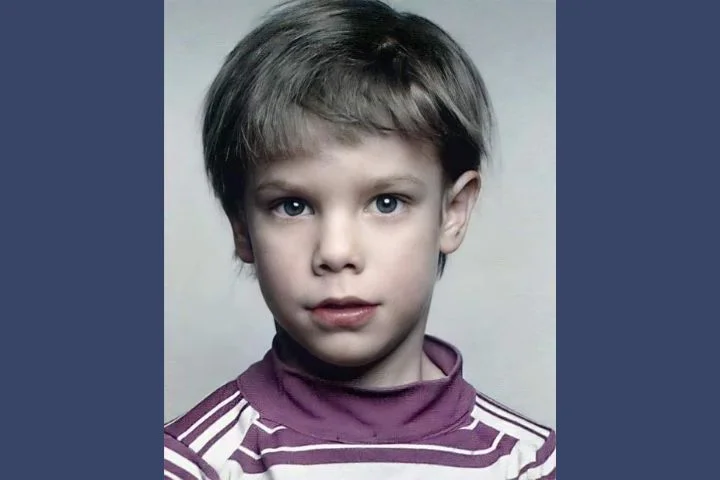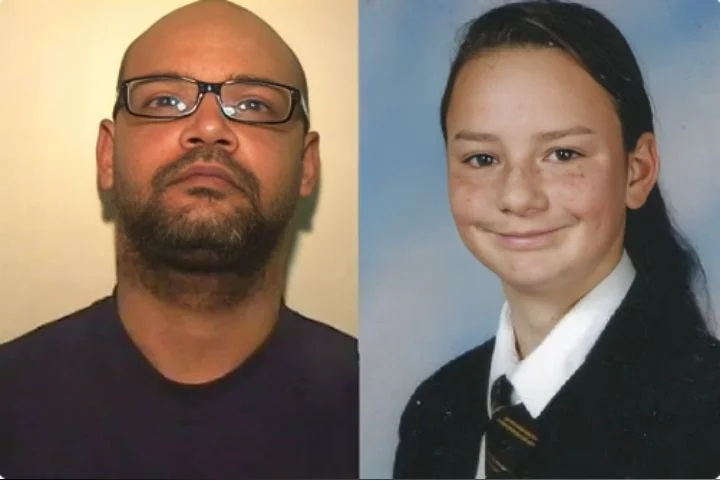Thousands of children’s faces used to appear under a bold black heading “MISSING” on milk cartons across the US. Even with their faces in homes across the United States, many of the children were never found and their fates remain unknown to this day.
Six-year-old Etan Patz was one of the very first children to have his picture placed on milk cartons after his disappearance in 1979, and his case was unsolved for almost four decades.
It wasn’t until 2017 when a jury convicted the man they believed responsible for Etan’s disappearance, closing the case that started the missing milk carton kids program.
Etan Patz Disappears
Etan Patz left his SoHo Manhattan home on Friday, May 25th, 1979, he wore a black Eastern Airlines cap and striped sneakers. He packed an elephant-covered tote bag with some of his favorite toy cars and a dollar for a soda before he stepped outside onto New York’s familiar streets.
This was the first time he was able to successfully convince his mother, Julie Patz, to let him walk the two blocks to the bus stop by himself.
It would be the last time she would ever see her son. When the school informed her of his absence, her legs gave out from under her.
The New York Police Department dispatched 100 officers with bloodhounds and helicopters to search for the missing boy, they went from neighborhood to neighborhood, door to door and conducted room-by-room searches.
Etan’s face was on televisions and plastered on telephone bools, on the screens of Times Square, and eventually it was printed on milk cartons in every state.
Milk Carton Kids
Etan Patz wasn’t the first kid on a milk carton, this tactic started a couple years prior in the Midwest after two boys went missing in Iowa.
However, Etan’s disappearance was quick and senseless, so it captured the attention of parents and children beyond New York and brought the milk carton campaign to national attention.
President Reagan even designated May 25th as “National Missing Children’s Day” in 1983. Etan’s case also inspired the founding of the National Center for Missing and Exploited Children (NCMEC) in 1984.
This organization adopted the Iowa milk carton strategy, making Etan the first child to be featured in a national campaign.
It was five years since he went missing, and most of the leads in the case had already gone cold.
There was a fresh wave of concern and suspicion throughout the country as more faces of missing children started to appear on pizza boxes, utility bills, grocery bags, telephone directories, and more.
These alerts worked on some occasions, such as the case of seven year old Bonnie Lohman, she came across a picture of herself as a toddler while she was grocery shopping with her stepfather who kidnapped her five years earlier.
But, occasions like these were rare and the major impact of the photos was to spread awareness that the world was not the happy, wholesome place that many citizens believed it to be. “Stranger danger” was now a common topic in homes and schools.
Etan Patz’s name was inextricable from warnings about pedo*philes and mur*derers, but his fate remained a mystery.
His Case Grows Cold
Decades went by and law enforcement continued to investigate Etan Patz’s disappearance. Clues would take them as far as the Middle East, Germany, and Switzerland.
Investigators searched the basement of Jose Ramos in 2000, he was a convicted child molester who was known to have a previous relationship with one of Etan’s babysitters. But, after eight hours of searching, they found no evidence or leads.
22 years after Etan’s disappearance, in 2001, Etan Patz was declared legally dead.
Etan’s father sought declaration in order to file a wrongful death suit against Ramos, Ramos was convicted in a civil case in 2004, but he never admitted to and was never officially tried with the boy’s murder.
The case remained open.
Police then realized in 2012 that Othniel miller, a handyman who knew Etan, poured a concrete floor after the boy went missing, they did some digging, but nothing was found.
This excavation did reignite media coverage of the case, and a few weeks later, authorities got a call from Jose Lopez, he was claiming that his brother-in-law, Pedro Hernandez, was responsible for the death of Etan Patz.
Pedro Hernandez

Pedro Hernandez was an 18-year-old stock clerk in a grocery story on Prince Street, not far from Etan Patz’s home.
A few days after the boy went missing, Pedro moved back to his hometown in New Jersey and started to tell people he had ki*lled a child in New York.
He then confessed to his church group, childhood friends, and even his fiancee. But it wasn’t until his brother-in-law made the call that he confessed to police.
He told detectives that he lured Etan into the store’s basement, “I grabbed him by the neck and I started to choke him.”
He also claimed that the boy was still alive when he put him in a plastic bag that he then put in a box and threw away.
Thirty-three years later, police finally made their first arrest in the case. But with only Hernandez’s statements as evidence, the trail was long.
It was argued by the defense team that Hernandez suffered from a mental illness that made it difficult for him to distinguish between fiction and reality. His lawyer told jurors that Hernandez has an IQ of 70 and also suggested that police used questionable tactics when they interrogated the mentally ill man.
They argued that the man had been convinced into admitting to something he really didn’t do. They also pointed back to the Ramos case, they argued that Ramos had a clearer motive.
The 2015 trail ended in a deadlock and one jury member believed that Hernandez was in fact innocent. A retrial took place in 2017 and the jury was convinced, Hernandez was guilty of murd*er and kidn*apping.
“The disappearance of Etan Patz haunted families in New York and across the country for nearly four decades. Today, a jury affirmed beyond all lasting doubt that Pedro Hernandez kid*napped and k*illed the missing child.”
Etan Patz’s Legacy
Etan Patz’s story hasn’t faded from public memory entirely, even after all these years. On the day that the case was closed, there were flowers left in front of the now-abandoned store where he is thought to have been ki*lled.
They were addressed to the “Prince of Prince Street.”
Faces of missing children no longer appear on milk cartons, but Etan’s disappearance continues to have a lasting impact through the now used AMBER alert system that was set up in 1996.
Alerts of missing children are now sent directly to people’s phones and Facebook feeds and are far more effective than the once used milk carton campaign. The AMBER alert system has seen a 94 percent success rate in the Netherlands.






